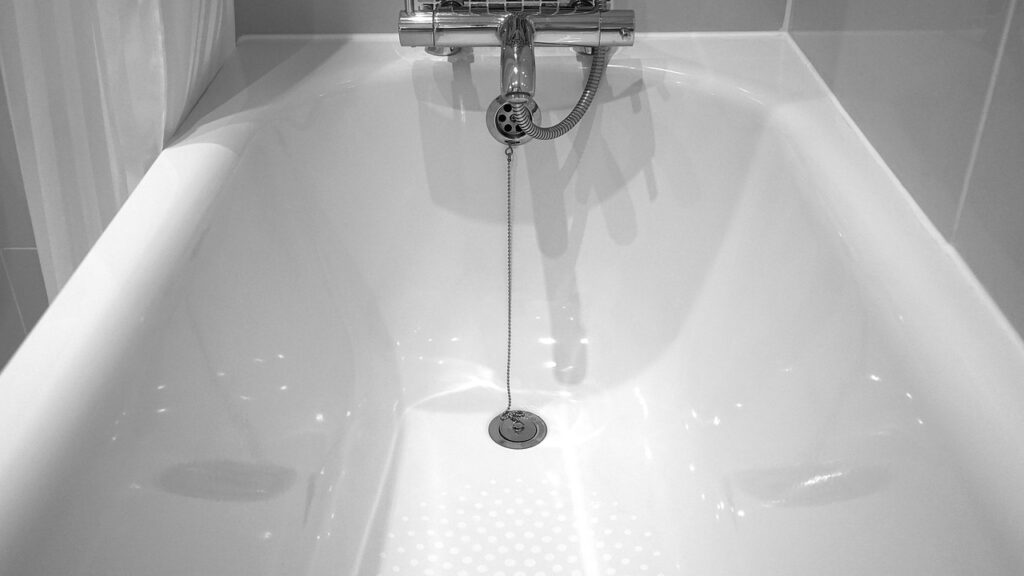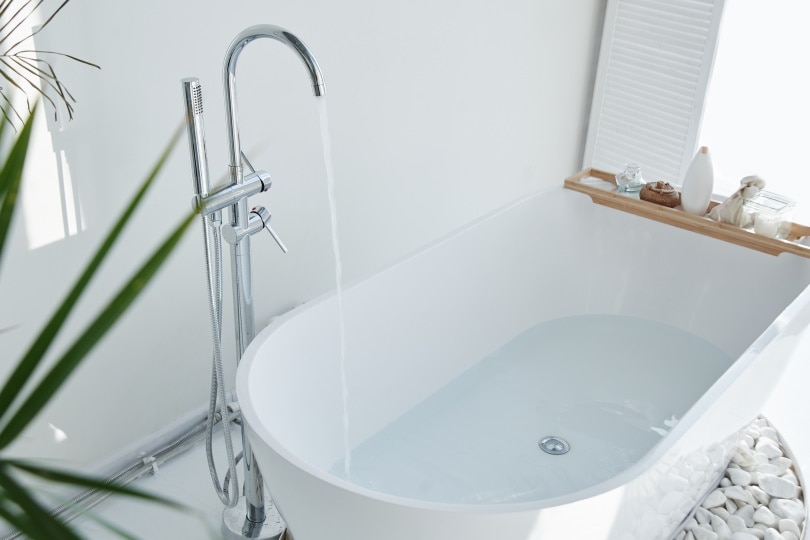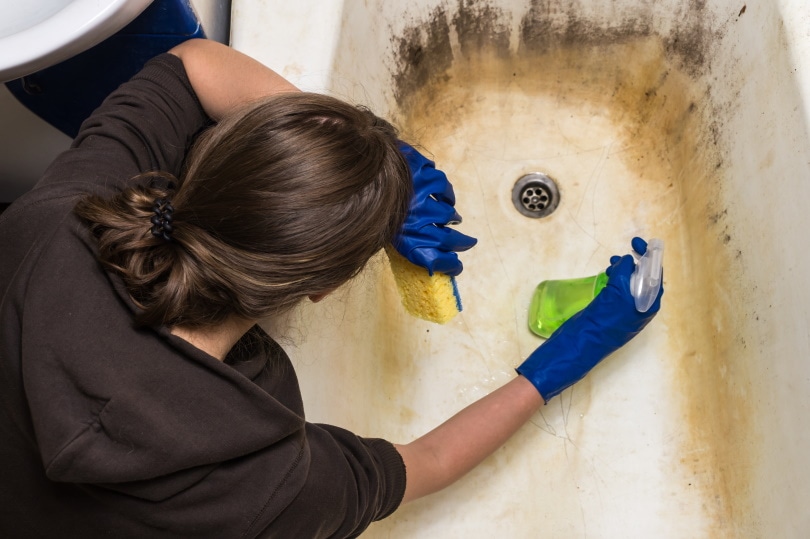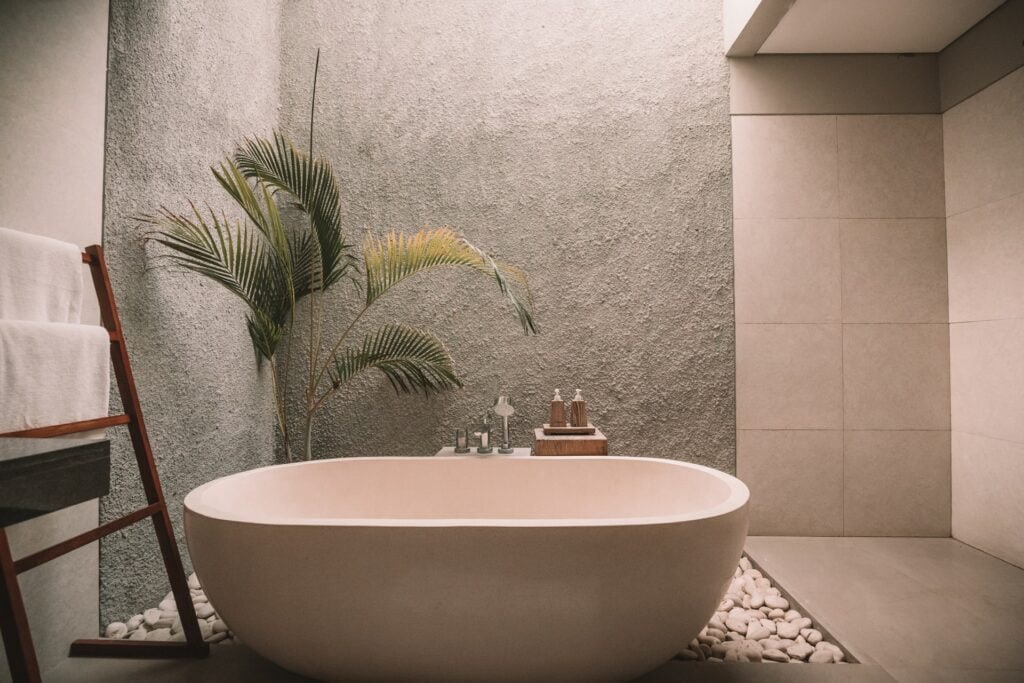8 Pros & Cons of Reglazing a Bathtub – Everything You Need to Know!
-

- Last updated:

Bathtubs offer homeowners a comfortable space to relax after a hard day. If you own an old or ugly bathtub and can’t afford a new one, you could wonder how to repurpose it to appear brand-new. That’s where reglazing comes in.
Reglazing is the final process of restoring a bathtub to its original look by covering the dents, refinishing, and recoloring. This article looks at the pros and cons of reglazing a bathtub to help you decide whether it’s worthwhile.
Pros of Bathtub Reglazing
1. You Can Do It Yourself
Homeowners often reglaze their bathtubs independently because they require only a few skills to do the job. While it’s advisable to hire a professional to achieve top quality, you can purchase a reglazing kit, learn the reglazing process, and do it yourself.
The best thing about reglazing a bathtub by yourself is the availability of learning materials. If you search the web, you will find many instructional how-to guides to help you tackle the process correctly.
Besides saving you a few bucks, DIY lets you personalize the look and feel of your bathtub. Ensure you do the reglazing in a well-ventilated room while wearing a respirator to counter the resulting fumes.
2. It’s a Quick Process
Reglazing a bathtub doesn’t consume much time. Ideally, the whole process should take a full day to complete, including the drying time of the repaired parts and the coats of paint and primer.
If the bathtub has an integrated shower that needs to be replaced, the renovation should only take a couple of days to complete. As you install the different components of a new bathtub, you can be sure that you won’t be stuck without a bathroom for a long time.

3. Cost-Saving
According to Forbes, reglazing an old bathtub is cheaper than replacing it. By comparison, the average household spends about $3,500 on new bathtubs without considering extra costs, such as removing the old structure, making a foundation for the new bathtub, and installing it. Overall, the total expenses may rack up to more than $5,000.
On the other hand, hiring a professional to help you reglaze your old bathtub should cost you a little over $1,000. A cheaper option is to purchase the reglazing kit and complete the process yourself—you’ll only spend $200!
4. Gives Your Bathtub a Brand-New Look
If you desire a cleaner bathtub, you should consider repurposing your current one for a brand-new look. By doing so, you not only have the power to change the color of the bathtub but also redesign it to suit your desired home decor.
Remember that reglazing allows you to paint any color of your choice. Just make sure you fill the cosmetic damage and etch the tub first. Doing so creates a perfect surface that allows the new primer and paints to hold.

5. Gives Other Features in the Room New Life
When a key element inside a house appears stained, dull, and in despair, it carries the general description of the house. Perhaps you are looking for a simple, cheap remodeling project that will offer a fresh perspective. In that case, you should consider reglazing the bathtub rather than replacing it and painting the whole house. Little effort, such as repairing the bathtub, can also go a long way in improving the general room’s appearance.
6. Extend the Life of an Old Bathtub
Another significant role of reglazing is to extend the bathtub’s life. Considering low-cost bathtubs are available on secondary markets out there, reglazing presents an option of adding value to our homes without spending many bucks.
The renovation process is more significant if your bathtub is nearing its last days and you don’t intend to buy a new one. While most bathtubs typically last for up to 50 years, refurbishing them at their dying ages helps increase their lifespan by up to two times.

7. Provides Extra Protection Layer for Older Tubs
It’s important to note that bathtubs made before 1984 may contain toxic lead elements at unsafe levels. The lead leaches into the water when the top parts of the tub start to wear down, thus posing a health risk to anyone who bathes in the tub.
If you use an old bathtub whose paint has begun to fade away, consider reglazing it as soon as possible. This will help extend the bathtub’s life and provide extra protection against harmful elements.
8. It Is Environmentally Friendly
In a world where pollution is a global threat, the eco-friendliness of household structures and appliances is also a considerable concern. However, by reglazing, you are guaranteed less waste than what you get after replacing it.
If you take note of the support and packaging materials that need dumping or recycling when replacing a bathtub, you’ll look at over 2,000 pounds of waste. On the contrary, reglazing results in only a few hundred pounds of debris, which you can dispose of in your bin.
Cons of Bathtub Reglazing
1. Safety Concerns
The US Centers for Disease Control and Prevention conducted a Fatality Assessment and Control Evaluation Program and found that 14 people have died from reglazing-related effects since 2000. While the figure is low, it is not enough to disregard the safety concerns associated with doing it.
A bathtub resurfacing process is hazardous because it involves using harmful materials and chemicals such as methylene chloride. Upon coming in contact with them, you may start experiencing dizziness, nausea, headaches, drowsiness, or throat irritation. To evade such problems, it’s advisable to have a professional do the fixing since they are equipped with the necessary skills and competency to do it safely.
2. Several Factors Determine Its Efficiency
Several factors come into play to determine whether your reglazing effort becomes a success or failure, and the weather is a principal determinant.
For instance, the curing process may take longer when the humidity levels are high. Too much cold may also affect the coating process. In addition, the surface may fail to cure appropriately when the ambient temperature drops below 62°F.
While reglazing typically takes a day to complete, such factors may extend the period to more than one week. To minimize the effects caused by the weather, you should consider resurfacing your bathtub when it’s relatively more relaxed (between 65°F and 100°F).
3. You Can’t Do It Twice
You can only reglaze a bathtub once. While you can solve minor issues by repairing the tub, doing a shoddy job puts you on the hook to purchase a new bathtub—you get no second option. For this reason, it’s essential to hire a professional reglazing company to do it for you. They will be held responsible for any mistakes with your tub, thus giving you an advantage.

4. It’s a Temporary Fix
Unlike replacing, refinishing a bathtub is a temporary solution that aims to extend its life for a few more years. After a couple of years of continuous usage, scratches, nicks, and gouges start appearing on the surface. Such effects are familiar with poorly done processes. And since you can’t reglaze it a second time, you’ll have to purchase a new tub altogether.
5. Puts Your Bathroom Out of Commission
Talking about the time a reglazed bathtub requires to be used again, the simple fact is that you’ll wait until the paint has dried and the primers are ready. While the drying duration typically is between 24–48 hours, it may extend to several days when the perfect conditions aren’t available.
However much you may want to use your bathtub again, ensure the new finish has cured and dried out completely. Complete drying is crucial since it helps prevent bubbles and stains on the bathtub’s surface while protecting against immediate damage.
6. Incompatible With Cheaper Bathtubs
If you intend to purchase a low-cost bathtub, install it in your bathroom, then reglaze it to appear brand-new, it’s essential to determine whether it’s compatible with the ordeal.
In most cases, cheaper bathtubs are incompatible with reglazing since they quickly break down. If you successfully refinish them, you must take note of their slipperiness to avoid breaking them easily. Ensure you add a non-skid coating before starting the drying process, or use a non-slip mat with no suction cups.
Problems That May Result After Reglazing a Bathtub
Now that we’ve covered the pros and cons of reglazing a bathtub, it’s worth understanding the problems that may result in your bathtub if you finally opt for it. These problems are more common in DIY occasions than when done by a professional.
They always occur due to using low-quality products, incorrect product ratios, or following a wrong process. Let’s look at how to solve those problems below.
Fading
In most cases, fading in reglazed bathtubs and other home structures is caused by thinly mixed paint, incorrect solvent materials, and a lack of a curing process. In most cases, the effect is accelerated by harsh and abrasive cleaners that frequently contact the bathtub surface.
To keep the paint from peeling off, ensure you use superior materials and chemicals and mix them thoroughly until they become thick enough.
Rough Finish
Under ordinary circumstances, a reglazed bathtub should feel smooth and appear as shiny as a new one. In case the outcome of your effort is a textured finish with a sandpaper feel and pointy look, it means you didn’t clean or sand the surface as required.
Because dust and debris often get stuck between the coatings, it’s essential to watch them closely while sanding and cleaning to ensure you achieve the best results.

Chipping
Chipping is another commonly seen problem. After a few months or years of reglazing, you may notice the surface chipping when more force is subjected to it. The entire bathtub gradually becomes easily vulnerable to chipping when items accidentally fall onto them.
To avoid such a problem, ensure zero interference and total compliance with the curing process.
Bubbling
If air gets trapped between the coating layers or the curing process is interfered with, your bathtub will have a bubbling finish. That’s why you must allow the surface and paint ample time to dry and cure, and also ensure you strip the old resurfacing that may prevent proper bonding.
Sticky Residue
Another popular effect of improper curing is a sticky or tacky feeling that remains even after curing for 24 hours. If such an effect occurs, you’ll have to respray the tub. However, the chances of a sticky residue remaining are typically low. If it happens to you, keep calm, and allow it more time to cure. And remember to keep your hands off the tub surface.
Conclusion
After evaluating the pros and cons of reglazing a bathtub, we observed that the benefits outweigh the negatives. The entire process is quick, easy, and cost-effective. But as much as it gives your bathroom and house a new life and extends the bathtub’s life, it is worth noting the associated challenges, such as safety concerns and being kicked out of the house for 48 hours.
Nonetheless, if you opt to refinish your bathtub, it’s advisable to hire a professional to help you do it. If you prefer to save a few extra coins by doing it yourself, you must brace yourself for the resulting problems if you do a shoddy job.
Featured Image Credit: Mikes-Photography, Pixabay
Contents


